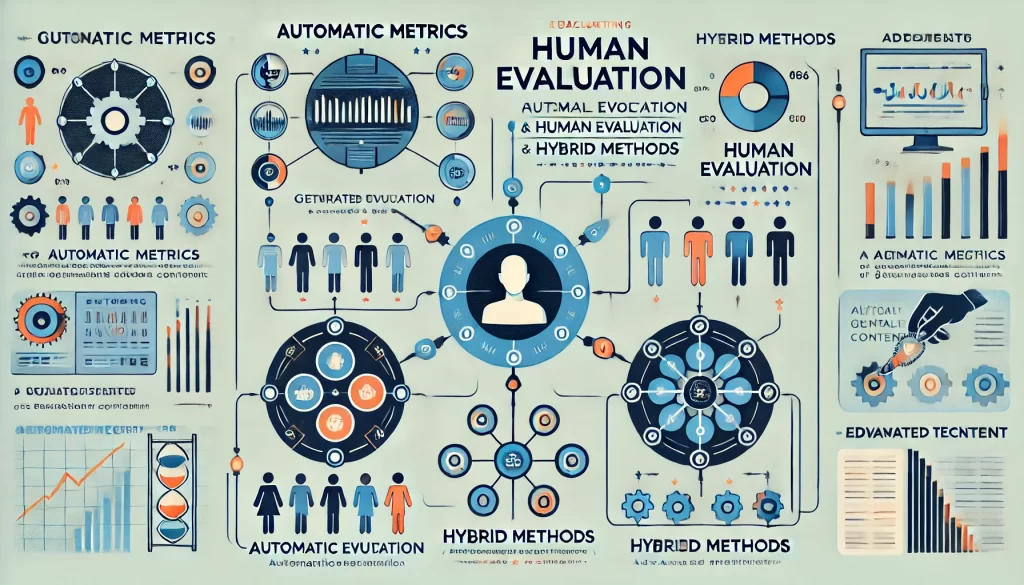
Evaluating the quality of generated content, particularly in the context of natural language processing (NLP) and generative models, involves various techniques. These techniques can be broadly categorized into automatic metrics, human evaluation, and hybrid methods. Here are some commonly used techniques:
Automatic Metrics
- BLEU (Bilingual Evaluation Understudy)
- Measures the similarity between the generated content and one or more reference texts using n-gram overlap.
2. ROUGE (Recall-Oriented Understudy for Gisting Evaluation)
- Focuses on recall and measures the overlap of n-grams between the generated content and reference texts.
3. METEOR (Metric for Evaluation of Translation with Explicit ORdering)
- Considers synonyms, stemming, and paraphrasing, making it more semantically aware than BLEU and ROUGE.
4. Perplexity
- Measures how well a probability model predicts a sample. Lower perplexity indicates better performance.
5. CIDEr (Consensus-based Image Description Evaluation)
- Designed for image captioning, but also applicable to text, focusing on consensus among multiple references.
6. BERTScore
- Uses BERT embeddings to evaluate the similarity of the generated text to reference text, capturing semantic similarities.
Human Evaluation
- Fluency
- Assess how grammatically correct and natural the generated content is.
2. Relevance
- Measures how relevant the generated content is to the given input or prompt.
3. Coherence
- Evaluates how logically consistent and well-structured the content is.
4. Engagement
- Measures how engaging and interesting the content is to the reader.
5. Usefulness
- Assesses how useful the content is in fulfilling its intended purpose.
6. Adequacy
- Measures the extent to which the generated content conveys the same meaning as the reference content.
Hybrid Methods
- Human-AI Collaboration
- Combines automatic metrics with human evaluation to balance efficiency and depth of assessment.
2. Error Analysis
- Involves detailed analysis of errors identified by both automatic and human evaluators to provide insights into model performance.
Advanced Techniques
- Adversarial Testing
- Involves generating challenging test cases to evaluate robustness and identify weaknesses in the generated content.
2. Interactive Evaluation
- Uses interactive scenarios where humans interact with the generated content to assess its practical utility and performance in real-time applications.
3. User Studies
- Involves conducting surveys or studies with end-users to gather feedback on the quality and effectiveness of the generated content in real-world contexts.
Each technique has its strengths and limitations, and the choice of evaluation method often depends on the specific use case, the nature of the content, and the resources available. Combining multiple techniques can provide a more comprehensive assessment of content quality.